 If you have been resting on your laurels over a wet January (and I don’t mean literally!) then now is the time to get going. The days are lengthening thank heavens and it really is time to think about the seasons ahead. But whilst I jest about the laurels there is a serious point here. December was generally a dry month, January was wetter and I wish I had a quid for everybody that said ‘I don’t mind it colder but at least it’s dry’. Actually the dry weather was something we needed to think about and the wetter January has helped enormously. Our hedges really do need rain this time of year and the camellias too.
If you have been resting on your laurels over a wet January (and I don’t mean literally!) then now is the time to get going. The days are lengthening thank heavens and it really is time to think about the seasons ahead. But whilst I jest about the laurels there is a serious point here. December was generally a dry month, January was wetter and I wish I had a quid for everybody that said ‘I don’t mind it colder but at least it’s dry’. Actually the dry weather was something we needed to think about and the wetter January has helped enormously. Our hedges really do need rain this time of year and the camellias too.
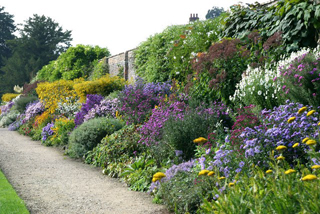 I had to go out and water in December to ensure that all the herbaceous perennials that I split and moved were surviving and some of the larger shrubs began to look a bit sad too, particularly when dry weather is accompanied by drying winds. But even though we now have rain, shrubs and trees that have been moved in the dormant season need what we call available water. Once they get their roots down and established they will find water for themselves. But just think of the poor plant. You dig it up, chop it in half and replant it. What a shock!
I had to go out and water in December to ensure that all the herbaceous perennials that I split and moved were surviving and some of the larger shrubs began to look a bit sad too, particularly when dry weather is accompanied by drying winds. But even though we now have rain, shrubs and trees that have been moved in the dormant season need what we call available water. Once they get their roots down and established they will find water for themselves. But just think of the poor plant. You dig it up, chop it in half and replant it. What a shock!
 It is trying to support the few remaining leaves, put its roots down and get used to a new position. Take some of its stress away by giving it some water that it can easily access whilst it becomes accustomed to its new space. Tubs of tulips and daffodils carefully planted may need water if they are under a pergola or porch and I still have marguerites flowering their little heads off from last summer but I have had to keep them watered. Sounds daft watering tubs in January and February but don’t neglect ‘available water’.
It is trying to support the few remaining leaves, put its roots down and get used to a new position. Take some of its stress away by giving it some water that it can easily access whilst it becomes accustomed to its new space. Tubs of tulips and daffodils carefully planted may need water if they are under a pergola or porch and I still have marguerites flowering their little heads off from last summer but I have had to keep them watered. Sounds daft watering tubs in January and February but don’t neglect ‘available water’.
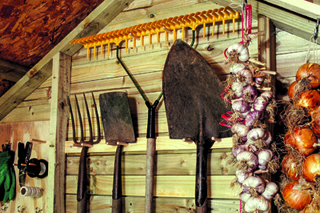 Of course all our gardening this month will be dependent on the weather conditions. No point in treading down wet or frozen soil and lawns. No point in getting ourselves too wet or cold either but there are jobs that need doing. Tidy the shed, take the lawn mower for a service, in fact have all garden machinery checked over this winter so that you are good and ready and safe for spring. It’s a good time to buy compost if you have space to keep it dry. Stored in a greenhouse or shed it will warm up ready for seed sowing.
Of course all our gardening this month will be dependent on the weather conditions. No point in treading down wet or frozen soil and lawns. No point in getting ourselves too wet or cold either but there are jobs that need doing. Tidy the shed, take the lawn mower for a service, in fact have all garden machinery checked over this winter so that you are good and ready and safe for spring. It’s a good time to buy compost if you have space to keep it dry. Stored in a greenhouse or shed it will warm up ready for seed sowing.
 Check our seed trays and pots; give them a good clean even if you did it at the end of last season. You will be amazed how many critters have made a home in the cracks and crevices, particularly young snails and slugs. Also check those fading packets of fertilisers and chemicals. If you left the lid loose they will have gone damp and lumpy and if you have lost the labels or instructions they should be disposed of safely. Not down the drain or in the bin!! The council will advise if necessary.
Check our seed trays and pots; give them a good clean even if you did it at the end of last season. You will be amazed how many critters have made a home in the cracks and crevices, particularly young snails and slugs. Also check those fading packets of fertilisers and chemicals. If you left the lid loose they will have gone damp and lumpy and if you have lost the labels or instructions they should be disposed of safely. Not down the drain or in the bin!! The council will advise if necessary.
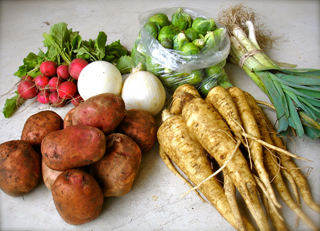 Have a look at the vegetables that are available now. Sprouts, leeks, parsnips, swede, turnips celeriac, cabbage, cauliflower and kale to name but a few. With a bit of thought now you could be growing a few of those for yourself rather than paying over a quid for a manky cauliflower. My broad beans are panted and emerging nicely on a propagating bench in the tunnel.
Have a look at the vegetables that are available now. Sprouts, leeks, parsnips, swede, turnips celeriac, cabbage, cauliflower and kale to name but a few. With a bit of thought now you could be growing a few of those for yourself rather than paying over a quid for a manky cauliflower. My broad beans are panted and emerging nicely on a propagating bench in the tunnel.
It’s time to think about chitting those potato tubers too. If you haven’t ordered them get on to it now. I always encourage you to try a few new potatoes just for their freshest flavour but unless you have a massive veg plot it is rarely worth growing main crop potatoes. I say this only because of the space they take up and the disease issues. It’s the old story from me really. Grow the veg which are more expensive in the shops and buy the ones that are always in plentiful supply and cheaper.
 If you want large bulb onions, January is the month to sow them as seed. For years I bought relatively expensive onion sets and for the last ten years I have been growing them from seed. It’s cheaper, easy and I believe the resultant onions store better and grow larger. You also don’t need to keep checking that the birds have pulled your sets from the soil. The seedlings need to be kept warm of course at this time of year and need to be in the lightest place possible or they will be drawn.
If you want large bulb onions, January is the month to sow them as seed. For years I bought relatively expensive onion sets and for the last ten years I have been growing them from seed. It’s cheaper, easy and I believe the resultant onions store better and grow larger. You also don’t need to keep checking that the birds have pulled your sets from the soil. The seedlings need to be kept warm of course at this time of year and need to be in the lightest place possible or they will be drawn.
If you want to warm the soil up more quickly so that plants can go out earlier under protection then put your cloches, fleece or polythene on the soil now. This does trap some heat but also allows the soil to dry out rather than planting into wet cold mud. So if it becomes dry think on.
And something I mentioned earlier, if you are over wintering crops, even mature ones, check regularly for slugs and snails that love to hide under the leaves and munch their way into spring! I read an article recently that reminded me to take all the yellow leaves off green crops that are growing still now, sprouts, cabbages etc. they are no use to the plant and encourage bugs. I haven’t done it yet though!
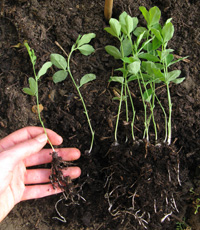 If by any chance you have forgotten to plant your sweet peas in autumn then they can be planted now. Always put them in deep pots so that they get a good root run. Most sweet pea seed doesn’t need soaking overnight as we always used to, but the older varieties still appreciate a good soak first to soften the very hard seed coat.
If by any chance you have forgotten to plant your sweet peas in autumn then they can be planted now. Always put them in deep pots so that they get a good root run. Most sweet pea seed doesn’t need soaking overnight as we always used to, but the older varieties still appreciate a good soak first to soften the very hard seed coat.
Plants with big fleshy roots like Japanese anemones may be propagated now from root cuttings. The anemones particularly don’t much like being propagated by dividing them up and can sulk for several years. Just dig up part or all of the plant to be propagated and wash off as much soil as you can from the roots so they can be separated. Cut off sound roots about the thickness of a pencil and divide into sections about 2″ long.
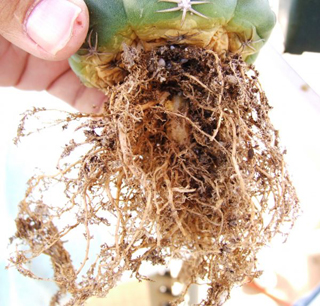 Trim off the thin fibrous roots from the sides, cut the bottom diagonally and the top straight across, that way you will know which is up and which is down! Pop them in a pot of compost with the tips just covered water well and keep frost free. Loads of new plants will emerge for not a lot of effort and if you remind yourself that each plant would have been at least £6 to buy you will feel quite righteous! Plants that will propagate in this way include acanthus, brunnera, dicentra, echincaea, oriental poppies, romneya and verbascum, to name a few.
Trim off the thin fibrous roots from the sides, cut the bottom diagonally and the top straight across, that way you will know which is up and which is down! Pop them in a pot of compost with the tips just covered water well and keep frost free. Loads of new plants will emerge for not a lot of effort and if you remind yourself that each plant would have been at least £6 to buy you will feel quite righteous! Plants that will propagate in this way include acanthus, brunnera, dicentra, echincaea, oriental poppies, romneya and verbascum, to name a few.
January can be very busy time; other jobs to do if you feel so inclined include, but are not limited to:
- Check stakes on trees haven’t worked their way loose and are damaging the bark
- New trees with low side shoots can be pruned up whilst they are young and dormant.
- Prune the wisteria to 2-3 buds; it’s a bit easier than when you took the long shoots off in August as now you can see more of the framework.
- Prune hazelnut trees now, shorten the new long growth by half and keep the trimmings for pea sticks.
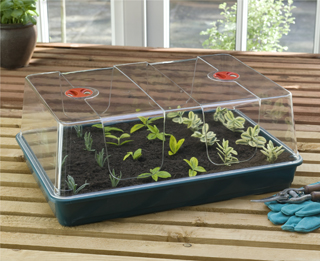 Invest in a propagator or heated bench, it allows you to get going more quickly next month and beyond particularly if we have another cold spring.
Invest in a propagator or heated bench, it allows you to get going more quickly next month and beyond particularly if we have another cold spring.- And pick up all those cordyline leaves that are scattered everywhere.
- I found a dry January day with a little sunshine when we had experienced three dry days in a row. By treading carefully, I hoed off three beds, left the roots on the surface to die in the projected cold, a good job done really early.
Plenty to do then with seed sowing with some warmth from a propagator being my priority. I love this time of year, there is real hope of better things to come – the daffodils know it!
Nicola Bush

